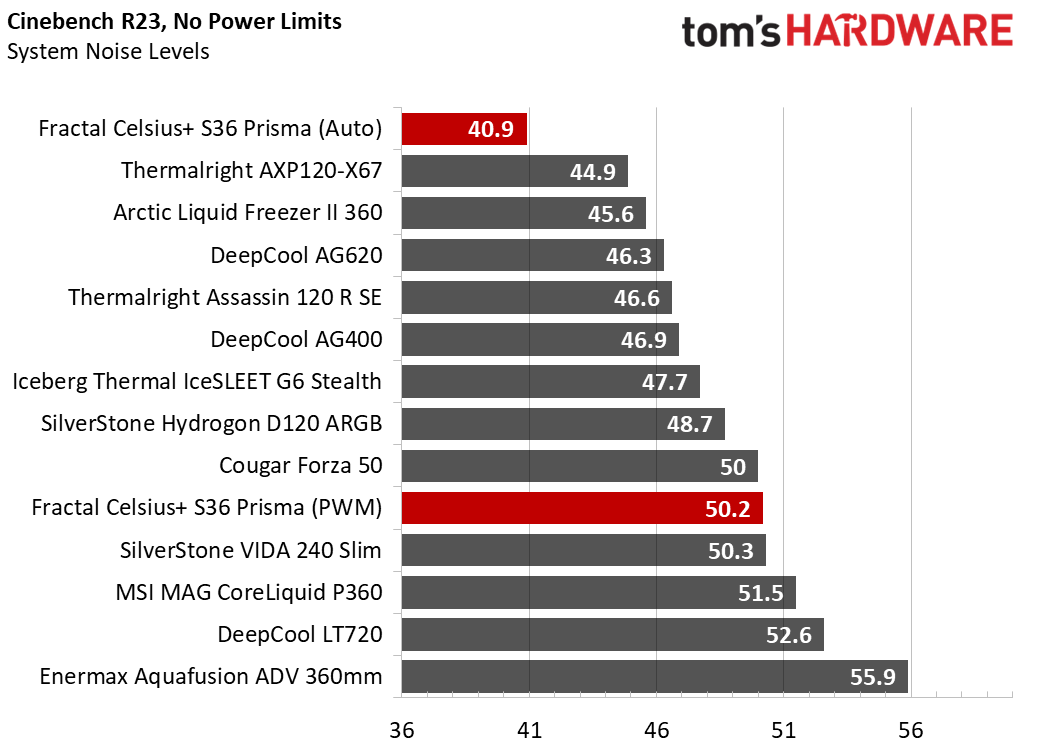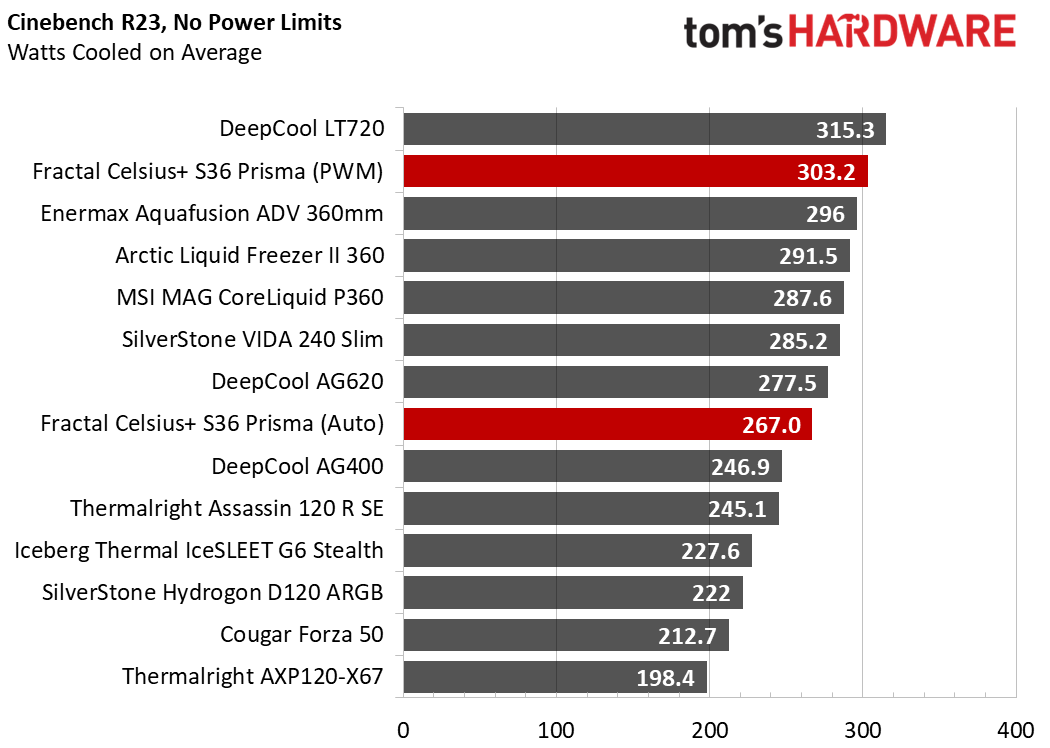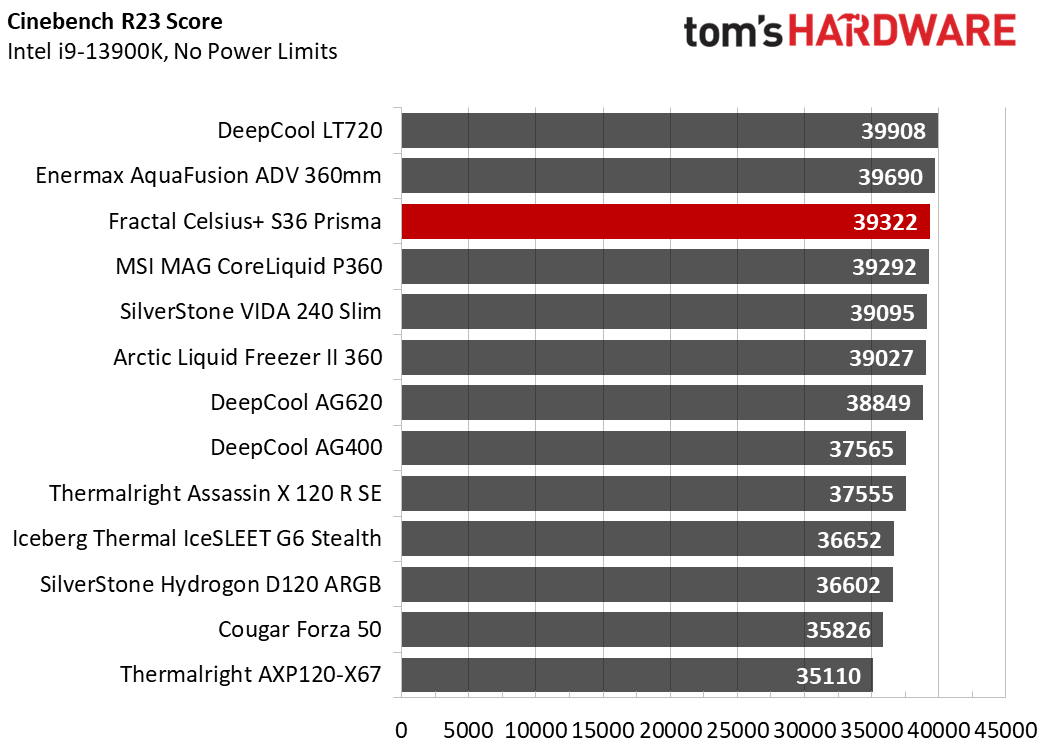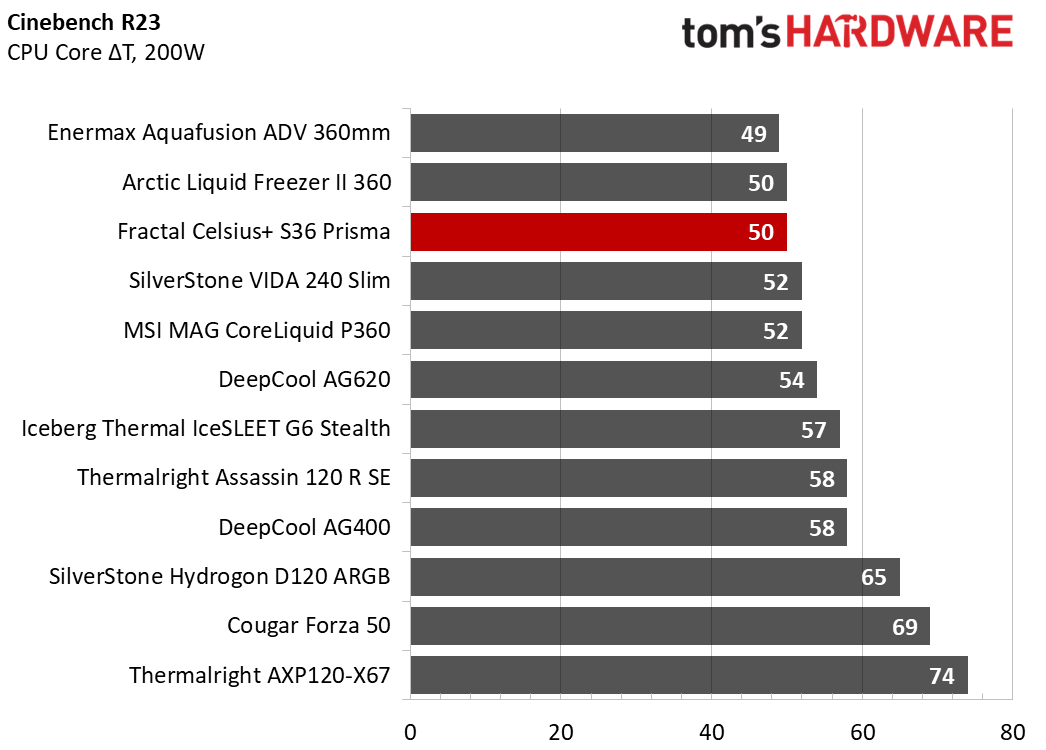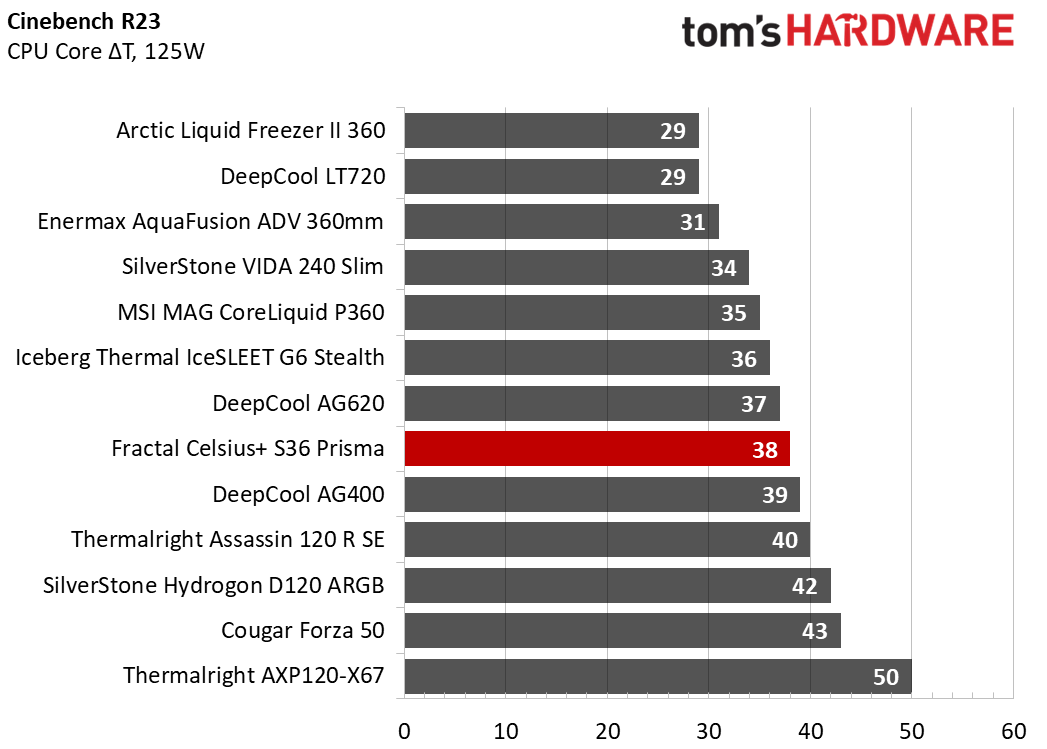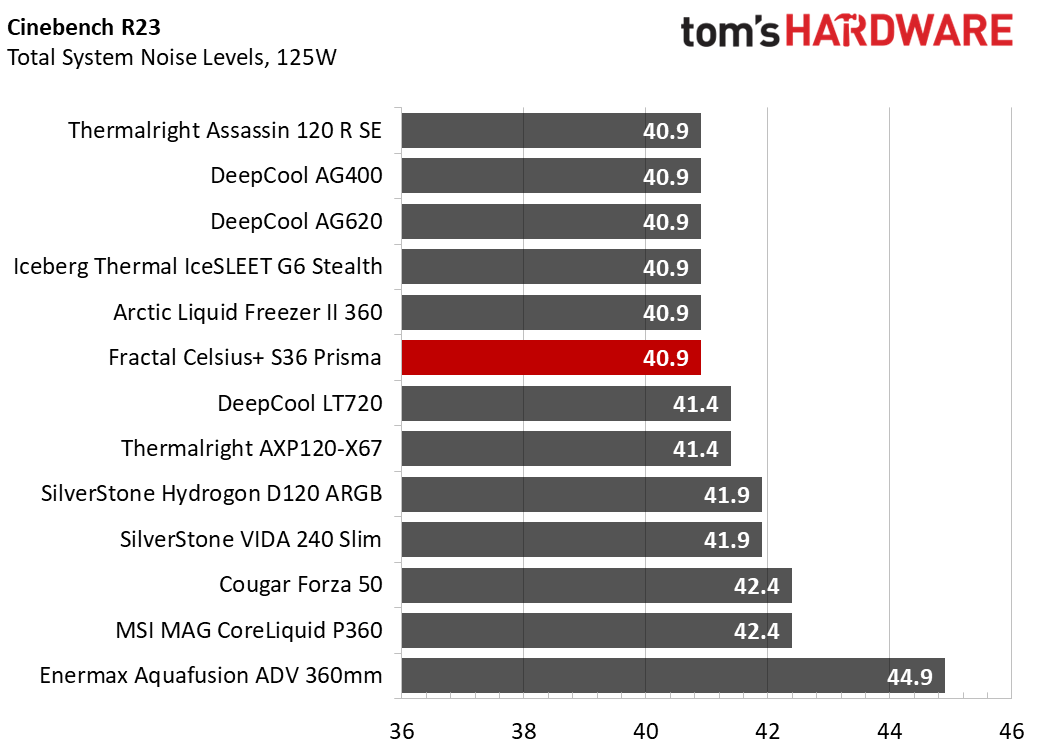Why you can trust Tom's Hardware
No Power Limits Cinebench Results
With Intel's i9-13900K pushing speeds of 5.5 GHz or higher, even the strongest of coolers hit TJ Max while running Cinebench R23 and other demanding scenarios. As the 13900K is designed to aim for its top safe temperature, we’ll be comparing the overall benchmark score and the CPU’s clock speeds instead.
The results below are for a 10-minute testing run. But to be sure that was sufficiently long to tax the cooler, we also retested both Thermalright’s Assassin X 120 R SE and DeepCool’s LT720 with a 30-minute Cinebench test. The results didn’t change much at all with the longer test: The average clock speeds maintained dropped by 29 MHz on DeepCool’s LT720 and 31 MHz on Thermalright’s Assassin X 120 R SE. That’s an incredibly small 0.6% difference in clock speeds maintained, a margin of error difference that tells us that the 10-minute tests are indeed long enough to properly test the coolers.
Because of the difficulty of cooling the i9-13900K in this workload, we feel the best way to compare coolers here is to record the average power consumption of the CPU. As Cinebench R23’s multi-core benchmark will push coolers to their limits, it’s also a great test for recording the worst-case scenario of fan noise levels.
You might notice that our noise charts start at 36 decibels, which is the noise floor of our testing environment. This makes 36dB our baseline measurement, as we’re unable to measure noise levels below this threshold. Keep in mind that noise measurements are logarithmic, meaning the differences between the noise levels of the coolers will be more perceptible than these graphs would suggest.
While set to its Auto mode, the S36 Prisma runs completely silently while still offering plenty of performance, cooling loads of up to 267W.
Switching to PWM mode will allow the fans to ramp up speeds for better performance at the cost of noise. When it comes to total cooling capacity, Fractal’s Celsius+ S36 Prisma does extremely well here with our second best result tested thus far, cooling just over 303W on average during the course of our tests. At higher speeds the fans are certainly audible, but they run quieter than those included by many competitors.
We’re also showing the total Cinebench R23 benchmark scores to illustrate how little is lost – or gained – with different cooling solutions. Between the weakest and strongest coolers, there is a total benchmark score variance of roughly 13%.
Get Tom's Hardware's best news and in-depth reviews, straight to your inbox.
Fractal’s Celsius S36+ Prisma has the second-highest Cinebench R23 benchmark score recorded during our testing, or 39,322 points.
200W Cinebench Results
When restricting power consumption to a more reasonable 200W, Fractal’s S36 Prisma continues to maintain the second place position, falling 3 degrees C behind DeepCool’s LT720, but ahead of all other coolers we’ve tested with Intel’s Raptor Lake so far.
Looking at acoustic levels when restricted to 200W, the S36 Prisma is especially impressive, running quieter than any other cooler we’ve tested it against, including Arctic’s Liquid Freezer II. We had to make sure that we hadn’t accidentally engaged the silent mode after seeing these results – this is exceptionally good performance, beating every other cooler we’ve tested!
This means that in common workloads, Fractal’s Celsius+ S36 Prisma runs practically silent in PWM mode. Only the most demanding workloads will actually use more than 200W, even with Intel’s i9-13900K.
125W Cinebench Results
The lowest power limit I test at is 125W, mainly because this is also the lowest level where I can reliably measure noise measurements. Lower power consumption causes the noise of the CPU cooler to fall below the noise created by the system fans (even while restricted to 35% speed).
Now in this scenario, the S36 Prisma’s performance was middle of the road, but that’s not a bad thing, especially when you consider it ran whisper quiet in this scenario.
Conclusion
The S36 Prisma offers two modes of operation: In PWM mode it is the second-strongest cooler we’ve tested and the quietest when loads are restricted to 200W or less. It also offers a silent mode which barely gives the fans a workout; in this mode the S36 Prisma is still capable of cooling an impressive 267W.
Fractal’s Celsius+ S36 Prisma offers a combination of strong and silent cooling performance that its competitors will struggle to match. Just note that you’ll have to pay a bit more than the competition for these kinds of top-teir results.
- MORE: Best CPUs for Gaming
- MORE: How to Overclock a CPU
- MORE: How to check CPU Temperature

Albert Thomas is a contributor for Tom’s Hardware, primarily covering CPU cooling reviews.
